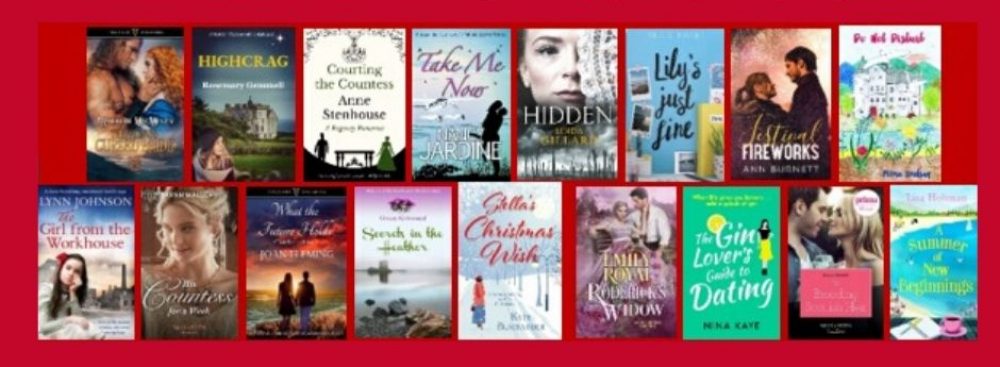
Tension or conflict are the major requirements after engaging characters: so we need a HOOK. An opening hook, followed by a chapter ending hook, followed by another…
Sometimes it helps build tension to allow the reader an insight which the heroine isn’t aware of. Why was a character missing-in-action for 5 years? Was it, as he’s told the heroine, because he was doing good works in the Third World, or was it because he was languishing at Her Majesty’s Pleasure?
Jane Austen’s Pride and Prejudice is an excellent example of how the heroine can allow herself to be manipulated by a conman. Conmen need to be personable otherwise they’d starve. Austen, however, does ramp up the tension by showing our heroine having to come to another conclusion. The housekeeper believes Mr Darcy is the best of employers. Lydia lets slip he was around in London when her marriage was arranged. Slowly, Lizzie has to admit to having been wrong and take the reader with her.
Foreshadowing – might be described as a technical term, but it’s quite simply the old ABC rule. If the neighbour’s dog is going to catch the burglar in the final paragraph, then it needs to have been seen earlier in the story, and probably twice. Sometimes as a writer, I write something and on re-reading yesterday’s work, think – What is that? Why is that? But, I leave it in. Very often, so often it’s scary, the answer seeps out of the text a hundred pages on. This subliminal clue is one of the things that builds the tension for the reader and keeps them involved with your characters.
Interesting and helpful sub-plots also keep the reader onboard. Does your sub-plot bolster the main theme without over-taking it? Is it peopled by sound, enjoyable characters? Will the reader hate the villains and love the heroines in the sub-plot as much as in the main one?
Forces of nature – I’m not talking here about those insufferable celebs one would truly hate to spend a lift journey with, never mind a long week-end. But is there a storm coming? Will the sea claim the house on the hill? Are the fleas going to jump from the rats and land on the heroine giving her bubonic plague? Does the hero have appendicitis and not a gyppy tummy?
These are a few of the ploys I like. What do you like to read?

To discover what my fellow robins think, go here:
Skye Taylor http://www.skye-writer.com/blogging_by_the_sea
Dr. Bob Rich https://wp.me/p3Xihq-1ly
A.J. Maguire http://ajmaguire.wordpress.com/
Helena Fairfax http://www.helenafairfax.com/blog
Rhobin L Courtright http://www.rhobinleecourtright.com

Enjoyed your analysis, and good advice for all writers. Of course, I always enjoy any Pride and Prejudice allusion. It is probably my most re-read book ever.
LikeLiked by 1 person
Hi Rhobin, I haven’t had a chance to get round the other posts yet, but I did catch mention of P&P in Helena’s. Some of us very much in tune… Anne
LikeLiked by 1 person
I did mention P&P, Anne, and it was so interesting to see it mentioned in your own post. When I first read that book – as a teenager at school – I found it so engrossing, I missed the bell and got detention for being late! I loved your example from it. Tension, conflict and engaging characters are exactly what I mentioned in my own post, too. We are very much in tune!
LikeLike
Hi Helena, I’m deeply into a re-write at editor’s request just now. If only it were all as easy as post event analysis suggests. Ah well, Anne
LikeLike
I like the foreshadowing to add tension. When an editor from St Martin’s Press read my the original version of my book The Candidate written entirely in my hero’s POV and suggested I needed more tension, added three other POVs including the villain so the reader knew what the villain was thinking, doing and knew which added considerable tension and made the book worth publishing.
LikeLike
Hi Skye, professional help and advice such as your editor’s is invaluable. Looking back, I sometimes blush over how much of a newbie I was. Thanks for dropping by, Anne
LikeLike
Anne, I can so identify with some little thing that slips into my writing in chapter 2 that then happens to become of major importance in chapter 25!
LikeLiked by 1 person
Hi Bob, Spooky, isn’t it? I was discussing it with my editor at DC Thomson when he asked ‘Where did that come from?’ and I had to say I didn’t know, but could we leave it for the present. His colleague then told me of another example one of their writers uses in their teaching workshops. So a universal experience for writer brain, perhaps. Anne
LikeLike
Hi Anne, I enjoyed your posts, particularly mentioning foreshadowing and having the event appear at least once if not twice. And weather can be very good at raising tension. Beverley
LikeLike
Hi Beverley, thanks for dropping by. I think we have a huge amount of agreement this month. Anne
LikeLike
I agree. When writing any genre, especially mysteries, foreshadowing is a must!
LikeLike
Hi Diane, thanks for dropping by. We’ve achieved a high level of agreement among ourselves this month. Anne
LikeLike
Anne, you bring up some really good points about hooks and subplots. Ahook always creatts some tension for the reader (what happens next) and suplots are a sure way to bring extra depth (and tension/conflict ) to the story. Nice post.
LikeLike
Hi Judy, thank you for dropping in and for your lovely comments. I did enjoy this topic, Anne
LikeLike